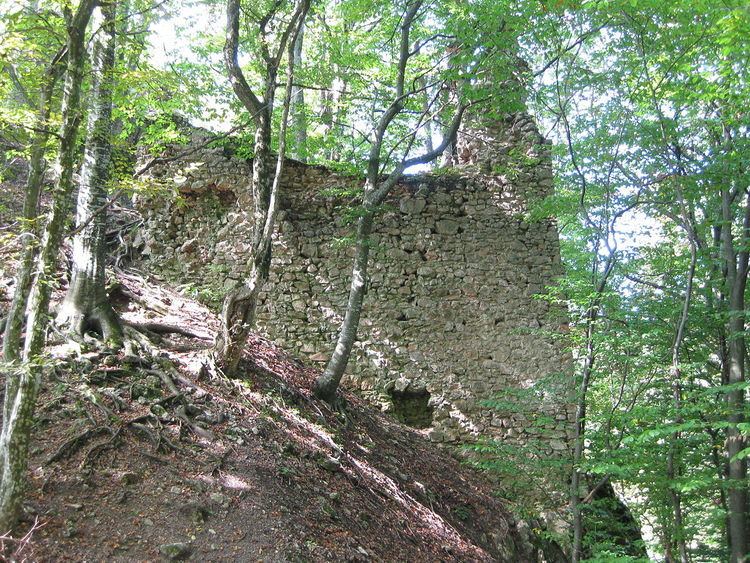Reign 12411248–1254 Noble family gens Geregye Name Paul Geregye | Spouse(s) N Gyor | |
 | ||
Successor Ladislaus Kan (1st term)Henry Koszegi (2nd term) | ||
Paul from the kindred Geregye (Hungarian: Geregye nembeli Pal; c. 1206 – before 1271) was an influential Hungarian baron following the Mongol invasion of 1241. He served as Judge royal twice during the reign of Bela IV of Hungary.
Contents
Family
Paul was born around 1206 into the gens Geregye as the son of Eth I, wo was Voivode of Transylvania earlier in 1200. He also had a younger brother, Geregye I, the ancestor of the Egervari family from Vas County. Paul married to an unidentified daughter of Palatine Pat Gyor around 1240. They had four sons and a daughter. The eldest one Nicholas held important secular functions, while his younger brothers (Stephen, Geregye II and Eth II) supported his political ambition in Transylvania. Paul's only daughter Agnes became a nun at the Margaret Island following her husband's death.
Bela's partisan
He inherited the kindred's possession from his father near the border of Vas and Zala County, where the Sarviz stream flows to the Zala river. He was first mentioned by contemporary records in 1224 as a supporter of Duke Bela. Paul and the young prince were contemporaries of the same age. When Andrew II of Hungary re-installed his son Bela as the Duke of Slavonia, Bela launched a campaign against Domald of Sidraga, a rebellious Dalmatian nobleman, and captured Domald's fortress at Klis. Paul Geregye also participated in this campaign, he defeated and captured Boyzen, Domald's brother and following the recapture of Klis, he also imprisoned Domald himself and rescued twelve noblemen. In 1229, Paul also fought in the unsuccessful campaign against the Principality of Halych. Duke Frederick II of Austria invaded the western parts of Hungary in 1230, in response Bela launched a counterblow against the Duke. Paul participated in the recaptures of Borostyanko and Lanzser Castles (today Bernstein and Burgruine Landsee in Austria), and also destroyed the dams erected by the Austrians which had blocked the flow of Mur river to overflow the surrounding villages. In 1231, King Andrew II led another campaign against Halych, Paul participated in the siege of Halych too, when the king successfully restored his youngest son, Andrew, to the Galician throne.
Following Andrew II's death, Bela IV ascended the Hungarian throne in autumn 1235. His former faithful servants during his ducal period were elevated to the highest courtly positions, in parallel with dismissals and imprisonments of Andrew's loyal barons. Paul was appointed ispan of Fejer County by Bela IV in 1238, he held the office until 1241. According to Gabor Beli and Laszlo Marko, he served in that capacity until May 1242. Meanwhile, the Mongols invaded Hungary and annihilated Bela's army in the Battle of Mohi on 11 April 1241. There is no mention that Paul had participated in the catastrophic battle. Nevertheless, Judge royal Andrew, son of Serafin was killed in the battlefield and Bela IV, who managed to escape to Dalmatia, was installed Paul Geregye as his successor.
After the Mongol invasion
In the winter of 1241–42, King Bela commissioned him with the protection of the Danube border, however the Mongols crossed the frozen river and invaded Transdanubia thus Paul was gradually forced to retreat. Following the withdrawal of Mongols in May 1242, Paul was responsible for recovering the Tiszantul region, he served in this capacity until June 1246. During this time, Paul restored order, annihilated outlaw groups and gathered and resettled the dispersed and fleeing population. He also oversaw the reopening of the Transylvanian salt mines. For his meritorious service, he was nominated ispan of Szolnok County in 1245 and held the dignity until 1247.
Paul participated in the Battle of the Leitha River on 15 June 1246, where Bela IV defeated the Austrian troops and Frederick the Quarrelsome was also killed. Paul severely injured in the battle and was captured by the enemy alongside his seven companions. The Austrians kept them prisoners until Paul paid 1,000 marks as ransom for all of them. Following this Paul returned to Hungary. Around September 1248, he was installed Judge royal for the second time. He held the dignity for six years, until April 1254, when he was replaced by Henry I Koszegi from the gens Heder. Between 1248 and 1255, he also served as ispan of Zala County.
On 21 January 1249, Bela IV donated Zsadany, Okany, Ker (Cheriu) and Bolcsi across the Koros River to Paul. He also received Berettyo (after this he was also titled as "Lord of Berettyo"), Szarand and Almas among others. In Kraszna County, he also became owner of Zovany, Valko and Nagyfalu. In 1255, he exchanged his estates in Zala County to his nephew's lands in Tiszantul, thus the Gerenye clan split into two branches (Paul's family and the Egervar branch which remained landowners in Western Hungary). Shortly thereafter Barnabas Geregye accused his uncle, Paul him of having him expelled from his newly acquired possessions by force. The chapter of Vasvar conducted for a second inspection in the early 1270s, during the reign of Stephen V of Hungary, when he reached the same conclusion.
Following the Mongol invasion, Bela IV abandoned the ancient royal prerogative to build and own castles, promoting the erection of nearly 100 new fortresses by the end of his reign. When retired from politics, Paul built Solyomko (now in Alesd, Romania) and Adorjan Castle. He died before 1271. After his death, his four sons squandered the kindred's wealth with their rebellion. Two of them (Geregye II and Eth II) were executed by Ladislaus IV, while Paul's branch lost all of its political influence. Their lands and estates (including the two castles) were governed by the Borsa clan following their downfall.
